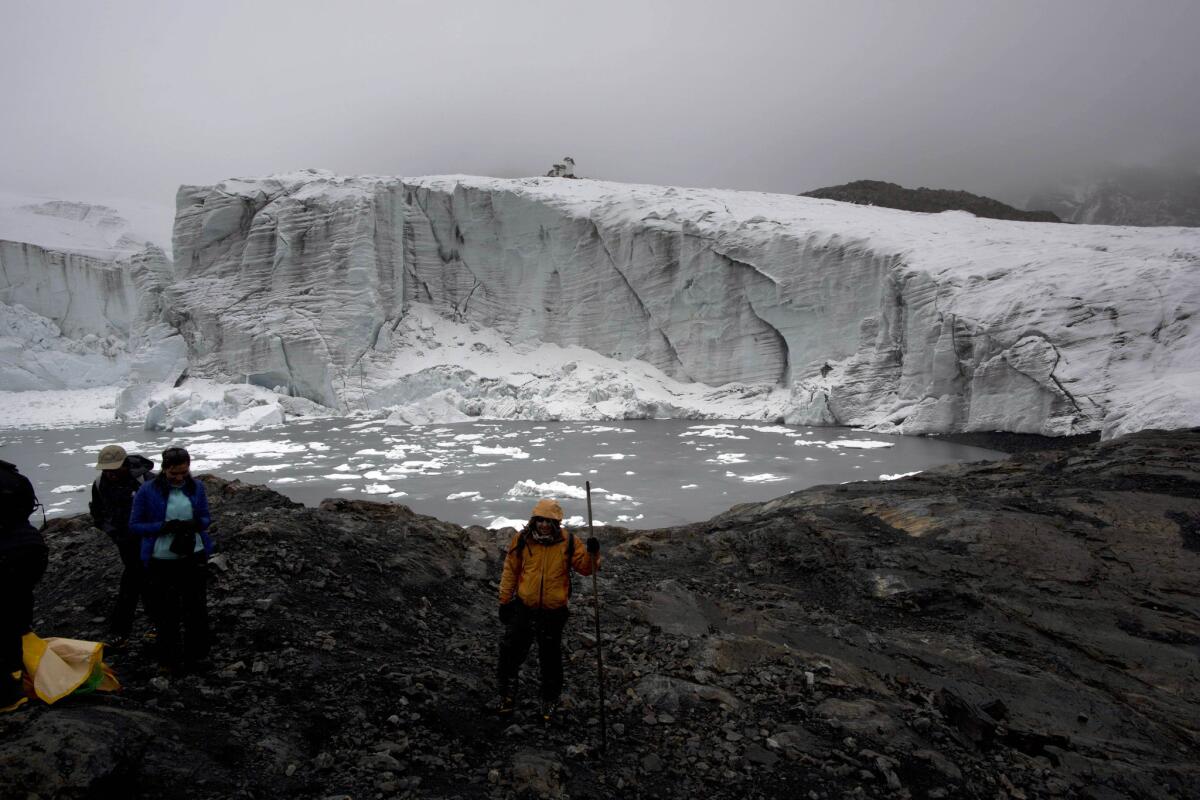Slower start, fast finish for sea level rise last century, study says

- Share via
Sea level rise during the bulk of the 20th century has been overestimated, a new report suggests.
The Harvard-led study, published online Wednesday in the journal Nature, knocks about half a millimeter off estimates of annual sea level rise that have been based on tide gauges. But it nonetheless confirms satellite data showing that the annual rate has sharply accelerated since the 1990s.
Researchers hadn’t set out to challenge the tide gauge data. They were trying to see whether they could use the information to figure out how sea level changed in response to runoff from melting glaciers on land, from thermal expansion due to absorption of heat by the ocean, and from changes in water storage on land, said the study’s lead author, Carling Hay, a geophysicist at Harvard University.
“As we moved further along in the study, we started summing all of those contributions, and that’s when we got the lower rate,” said Hay. “It was as much a surprise to us as it was to everyone else.”
Virtually everyone else, however, went back and reconsidered their tally of the inputs. After all, there were far more data on tides than on ice melt. Some tidal gauges go back to the 18th century.
But tidal gauge data have some built-in problems. Gauges are widely spaced, have many time gaps and are subject to local influences, including man-made dikes, locks and dams. They also are mainly in mid-latitude Northern Hemisphere ports.
Then there was the more recently recognized problem of Earth’s crust shifting, not just in response to tectonic plates grinding against one another, but from the loss of the crushing load of ice that melted after the last ice age.
Different researchers have worked around those and other issues by eliminating statistical outliers, relying on regional averages, finessing data with modern satellite measurements and adjusting for shifts in Earth’s crust.
They arrived at a consensus of 1.6-1.9 millimeters a year for all but the last decade of the 20th century. But that still left a gap between what they could tally from contributing sources and what the tides seemed to tell them about ocean volume.
The new study, based on 622 tide gauges, suggests the historical rise was closer to 1.2 millimeters a year. That level in effect closes the accounting gap.
From 1993 to 2010, however, the annual rate of sea level rise leaps to about 3 millimeters per year, the researchers found. That conclusion is confirmed by recent satellite measurements.
“It’s a substantial increase that we should be concerned about,” Hay said.
The new calculations will have to be corroborated, said oceanographer Reinhard Flick of the Scripps Institution of Oceanography at UC San Diego, who was not involved in the study. If so, Flick added, the revision makes the recent acceleration “significantly larger than previously supposed.”
Does climate science float your boat? Follow me on Twitter: @LATsciguy







